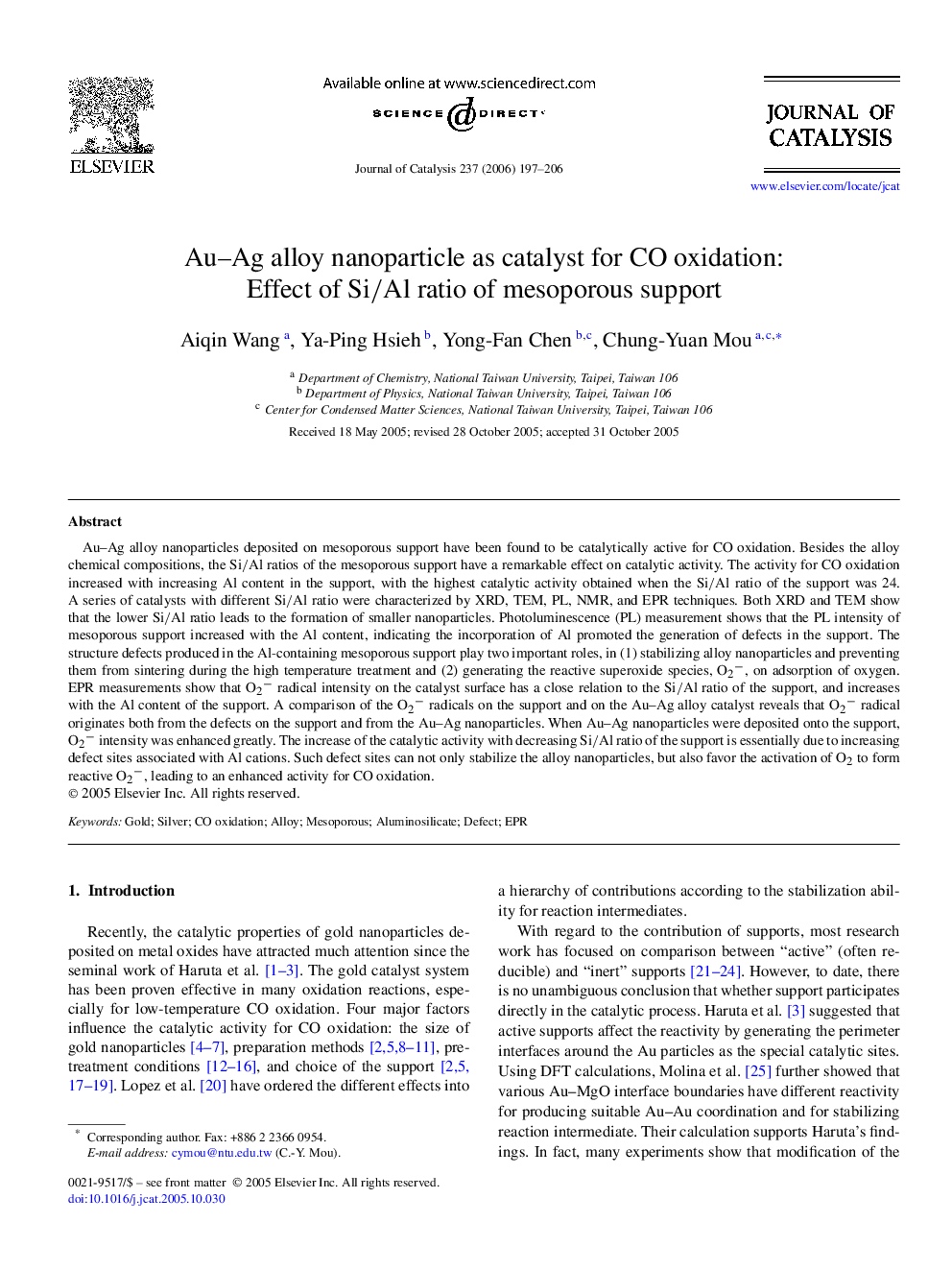| Article ID | Journal | Published Year | Pages | File Type |
|---|---|---|---|---|
| 63428 | Journal of Catalysis | 2006 | 10 Pages |
Au–Ag alloy nanoparticles deposited on mesoporous support have been found to be catalytically active for CO oxidation. Besides the alloy chemical compositions, the Si/Al ratios of the mesoporous support have a remarkable effect on catalytic activity. The activity for CO oxidation increased with increasing Al content in the support, with the highest catalytic activity obtained when the Si/Al ratio of the support was 24. A series of catalysts with different Si/Al ratio were characterized by XRD, TEM, PL, NMR, and EPR techniques. Both XRD and TEM show that the lower Si/Al ratio leads to the formation of smaller nanoparticles. Photoluminescence (PL) measurement shows that the PL intensity of mesoporous support increased with the Al content, indicating the incorporation of Al promoted the generation of defects in the support. The structure defects produced in the Al-containing mesoporous support play two important roles, in (1) stabilizing alloy nanoparticles and preventing them from sintering during the high temperature treatment and (2) generating the reactive superoxide species, O2−, on adsorption of oxygen. EPR measurements show that O2− radical intensity on the catalyst surface has a close relation to the Si/Al ratio of the support, and increases with the Al content of the support. A comparison of the O2− radicals on the support and on the Au–Ag alloy catalyst reveals that O2− radical originates both from the defects on the support and from the Au–Ag nanoparticles. When Au–Ag nanoparticles were deposited onto the support, O2− intensity was enhanced greatly. The increase of the catalytic activity with decreasing Si/Al ratio of the support is essentially due to increasing defect sites associated with Al cations. Such defect sites can not only stabilize the alloy nanoparticles, but also favor the activation of O2 to form reactive O2−, leading to an enhanced activity for CO oxidation.
